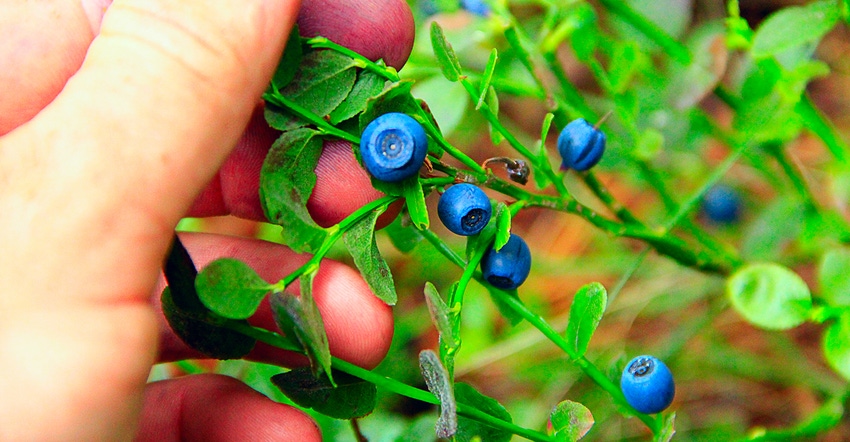Balancing functionality, flavor in sports nutrition applications
Botanicals such as green tea extract and tart cherry can help active consumers meet their fitness goals.

Like many consumers, athletes and active individuals are shunning synthetic ingredients with chemical-sounding names and are, instead, seeking clean, natural, high-functioning botanicals to support their healthy lifestyles, dietary practices and performance goals.
Herbal and botanical ingredients have increasingly found their way into sports and active nutrition products to add functionality sought by consumers, including those that help naturally address energy, recovery, endurance, inflammation, focus, heart health, metabolism and free radicals.
In a report titled “Global Botanical Extracts Market 2020-2024,” research firm Technavio forecasted that market growth will accelerate at a compound annual growth rate (CAGR) of over 8%, with incremental growth of US$2.03 billion. The continued growth and broadening of the sports nutrition market are among the major driving factors for this growth.
Natural antioxidants
Botanicals in high demand for sports nutrition applications include those with potent antioxidant capabilities through constituents like polyphenols. When muscles work and burn calories, free radicals and other reactive oxygen species (ROS) are formed as a by-product.1 Athletes have been shown to have increased ROS and reduced levels of antioxidants.2 An excess of free radicals can cause a variety of problems within the body, including damaging muscles and lowering their ability to contract.3 Antioxidants also help promote a healthy and fast recovery after exercise by increasing blood circulation. This in turn, increases red blood cells that can help nourish the muscles.
Some botanicals that contain potent antioxidants include extracts of green tea, bilberry, grapeseed, rosemary, olive leaf, pomegranate and lychee.
Energy and metabolism
Active consumers continue to look for natural support for energy and proper metabolism. Some functional botanical extracts that contain natural energy boosters include extracts of green tea, green coffee, guarana, yerba mate, epimedium (aka horny goat weed) and ginseng.
The effects of green tea on weight loss and maintenance have been reported in numerous studies. It has been shown to improve blood circulation,4 reduce blood pressure5 and support weight management.6 The combination of epigallocatechin gallate (EGCG) and caffeine in green tea synergistically helps stimulate energy expenditure.7 Green tea has thermogenic properties and promotes fat oxidation beyond that explained by its caffeine content alone.8 Green tea extract may play a role in the control of body composition via sympathetic activation of thermogenesis, fat oxidation, or both.9
Green coffee bean, a natural energetic, is one of the more promising nutraceuticals being researched to help counteract weight gain and obesity. It contains high concentrations of chlorogenic acids known to have health benefits and influence glucose and fat metabolism; one study demonstrated it may be an effective ingredient in reducing weight in pre-obese adults.10
Managing healthy inflammatory response
Per research to follow, botanicals such as bilberry and tart cherry have also been shown to promote anti-inflammatory effects. Having a proper response to inflammation may help decrease discomfort, fatigue and the possibility of injury.
In one study of 20 team sports players (8 males, 12 females), tart cherry juice accelerated recovery after intermittent exercise, compared to placebo.11 Tart cherry improved muscle soreness despite registering no significant differences between inflammatory marker c-reactive protein (CRP) or muscle damage marker creatine kinase (CK).
Another study found tart cherry supplementation in male soccer players attenuated inflammatory marker interleukin 6 (IL-6) as well as performance indices, including muscle contraction, and delayed onset muscle soreness (DOMS), compared to placebo.12 A recent meta-analysis concluded, “Tart cherry concentrate may enhance endurance exercise performance via its low glycemic index, anti-inflammatory and anti-oxidative capacity, and blood flow enhancing effects.”13
Flavor is not an afterthought
The market for sports nutrition products has greatly diversified in the last few years to encompass active nutrition. These consumers are looking for functionality but will reject products that do not have pleasant taste and texture.
Using botanicals in sports nutrition applications can provide unique benefits but also present unique challenges when it comes to flavor. Whether delivered as powders, shakes, bars, drinks or gummies, botanical combinations and formulation techniques can be extremely complex. Because many herbs and other botanicals have overpowering, unique, and sometimes unpleasant flavors, this requires expert understanding of flavor mimicking and masking, optimal botanical levels, synergies and complementary ingredients.
Taste modulators play an important role in taste enhancement, bitterness blocking and cutting lingering sweetness. Using natural botanicals can help with taste in a natural way. Many of these ingredients have specific synergies with natural sweeteners like stevia and monk fruit. A recent in-house analysis by Layn Nutraceuticals showed that using 60 ppm of combined natural extracts can considerably enhance sweetness, reduce lingering taste and improve mouthfeel.
Some of the key botanical extracts used to help improve flavor and texture, and serve as taste modulators, include green tea, rice bran, sweet blackberry leaf, bitter orange, apple bark, oregano, pomegranate and pomelo.
Natural sweetness
The sports nutrition market is keenly aware of the sweeteners used in formulations and is looking for natural alternatives to sugar. Many of these consumers avoid synthetic and chemical sweeteners.
The sports nutrition category is among one of the earliest to embrace plant-based sweeteners such as stevia, monk fruit and combinations thereof. Being natural, clean label and healthy is important to sports nutrition consumers, and they do not like to see sugar or artificial sweeteners on the labeled ingredient list.
In the earlier stages, most stevia used in sports nutrition was based primarily on high Rebaudioside (Reb) A. Nowadays, a lot of next-generation stevia with multiple steviol glycosides (Reb A Plus) are being used. Monk fruit is also an ideal choice for these applications, providing a more appealing label, cleaner taste profile and great synergy working with stevia.
Natural sweeteners like stevia and monk fruit have evolved over the years. Through decades of research and innovation, experienced suppliers have gotten very creative and smart with these ingredients. Extensive work has been done to identify individual constituents, making it possible to isolate, combine and tailor them to specific formulation and application requirements.
Advances in research and technology, coupled with a deeper understanding of the complexities of these natural sweeteners, have opened many possibilities for unique, customized blends.
The steviol glycosides found in stevia may be tailored to meet specific application needs. New varieties of stevia leaf with pure, exotic steviol glycosides have emerged through developments in research and agriculture.
Monk fruit production has also evolved to optimize the mogrosides. Even through the breeding stages, advanced agricultural practices and innovation have enabled a natural increase of the Mogroside-V content in monk fruit itself. Beyond this, the various mogrosides may also be optimized for specific uses and flavor profiles.
Further, combining mogrosides and steviol glycosides allows for even more unique sweetening capabilities for specific applications.
Sports nutrition applications must support the functional benefits consumers are looking for, while maintaining great taste and texture. Natural herbal and botanical extract ingredients help brands achieve these goals while also meeting the requirements for natural, plant-based formulas.
Collette Kakuk is vice president of global marketing for Layn Natural Ingredients. She has decades of experience in food service, restaurant and top Fortune 100 business consulting.
References
1 Turrens JF, Boveris A. “Generation of superoxide anion by the NADH dehydrogenase of bovine heart mitochondria..” Biochem J. 1980 Nov 1;191(2):421-7.
2 Balakrishnan S, Anuradha C. “Exercise, depletion of antioxidants and antioxidant manipulation.” Cell Biochem Funct. 1998 Dec;16(4):269-75.
3 Fulle S et al. “The relationship between oxidative stress and the functional capacity of skeletal muscle.” Basic Appl Myol. 2004;14:33-36.
4 Katanasaka Y et al. “Kosen-cha, a Polymerized Catechin-Rich Green Tea, as a Potential Functional Beverage for the Reduction of Body Weight and Cardiovascular Risk Factors: A Pilot Study in Obese Patients.” Biol Pharm Bull. 2020;43(4):675-681.
5 Onakpoya I et al. “The effect of green tea on blood pressure and lipid profile: a systematic review and meta-analysis of randomized clinical trials.” Nutr Metab Cardiovasc Dis. 2014 Aug;24(8):823-36.
6 Vázquez Cisneros LC et al. “Effects of green tea and its epigallocatechin (EGCG) content on body weight and fat mass in humans: a systematic review.” Nutr Hosp. 2017 Jun 5;34(3):731-737.
7 Dulloo AG et al. ““Efficacy of a green tea extract rich in catechin polyphenols and caffeine in increasing 24-h energy expenditure and fat oxidation in humans.” Am J Clin Nutr. 1999 Dec;70(6):1040-5.
8 Hursel R. et al. “The effects of green tea on weight loss and weight maintenance: a meta-analysis.” Int J Obes (Lond). 2009 Sep;33(9):956-61.
9 Kao YH et al. “Modulation of obesity by a green tea catechin.” Am J Clin Nutr. 2000 Nov;72(5):1232-4.
10 Vinson JA et al. “Randomized, double-blind, placebo-controlled, linear dose, crossover study to evaluate the efficacy and safety of a green coffee bean extract in overweight subjects.” Diabetes Metab Syndr Obes. 2012;5:21-7.
11 Quinlan R, Hill JA. “The Efficacy of Tart Cherry Juice in Aiding Recovery After Intermittent Exercise.” Int J Sports Physiol Perform. 2020;15(3):368-374.
12 Bell PG et al. “The Effects of Montmorency Tart Cherry Concentrate Supplementation on Recovery Following Prolonged, Intermittent Exercise.” Nutrients. 2016 Jul 22;8(7).
13 Gao R, Chilibeck PD. “Effect of Tart Cherry Concentrate on Endurance Exercise Performance: A Meta-analysis.” J Am Coll Nutr. 2020 Jan 27:1-8.
About the Author(s)
You May Also Like






.png?width=800&auto=webp&quality=80&disable=upscale)